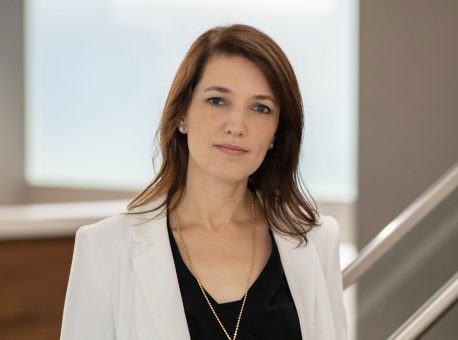Re-Imagining Housing Design with Marissa Kasdan, Director of KTGY’s R+D Studio
Archinect
October 17, 2019
With a rapidly aging population, an inward flux of new urban residents, and developmental pressures forcing displacement and homelessness on growing numbers of people, housing design finds itself at a critical nexus in the United States.
And while many architecture firms are surely working on innovative housing projects, few have dedicated teams focused on pursuing housing innovation from an integrated, transformational perspective. KTGY Architecture + Planning is one such firm, however. The R+D Studio at KTGY exists to “explore new and emerging ideas related to building design and technology,” with an eye toward integrating new housing developments into their surroundings, re-thinking existing design paradigms, and prototyping cost- and time-saving construction approaches all the while expanding the realm of housing design to include co-living arrangements, contemporary senior housing models, and supportive housing.
We talked with Marissa Kasdan, director of KTGY’s R+D Studio, to discuss how well-designed housing can serve more people, the changing nature of domestic spaces, and to highlight innovations coming out of her team’s work.
What is the focus of KTGY’s R+D Studio? And of your position?
KTGY’s R+D Studio was created as a dedicated effort focused on furthering KTGY’s vision, “to move the discourse of architecture forward by continuously searching for better.” With that goal in mind, the R+D Studio explores new and emerging ideas related to building design, shifts in residential demographics, and trends in the way people live. My role, as director of the R+D Studio, is to maintain the focus of the studio in a way that also supports the design efforts of the various studios within KTGY. I coordinate with studio leaders from KTGY offices across the country and look for opportunities to develop design concepts that support the building types and market segments we serve.
 Section of the Skytowns proposal showing the alternating corridors and two-story townhome configuration. Image courtesy of KTGY Architecture + Planning.
Section of the Skytowns proposal showing the alternating corridors and two-story townhome configuration. Image courtesy of KTGY Architecture + Planning.
The R+D Studio seems to pursue an integrated approach that considers design, urban-scale considerations, and constructability issues simultaneously. Can you share an example of a project (or an approach/idea) that has most benefited from this arrangement?
The Skytowns concept considers how townhome unit plans in a high-rise configuration could maximize building efficiency while minimizing elevator stops and shared circulation space, all while providing multi-level unit layouts in an urban setting. On every other level, the townhome units recapture the corridor area as unit area, increasing the overall building efficiency to nearly 90%. The inherent nature of the multi-story units creates a unique opportunity for vertical variation along the high-rise façade.
 A plan view of KTGY’s Macro-Unit co-living design. Image courtesy of KTGY Architecture + Planning.
A plan view of KTGY’s Macro-Unit co-living design. Image courtesy of KTGY Architecture + Planning.
One of your research focuses revolves around expanding the definition of co-living. How is the research coming out of the R+D Studio informing the design of unit plans for this type of housing?
Initially, we developed a co-housing concept to address urban affordability for young professionals trying to manage their rents, leading to the development of an 11-bedroom, 11-bathroom prototype unit. Since then, we have discussed with many of our clients and other interested individuals the opportunity to apply the benefits of shared living in new ways to help address a variety of issues and serve a wide range of demographics.
 Interior renderings of the Mod Hall modular student housing project. Image courtesy of KTGY Architecture + Planning.
Interior renderings of the Mod Hall modular student housing project. Image courtesy of KTGY Architecture + Planning.
With housing affordability continuing to challenge cities and developers, shared living has the potential to cut housing costs while also providing the social connectedness that has been dwindling from our society. Families, seniors, and low-income individuals are some of the demographic groups we envision could greatly benefit from the inherent qualities of co-housing communities.
 KTGY’s Re-Habit project proposes repurposing underutilized mall properties with new housing arrangements. Image courtesy of KTGY Architecture + Planning.
KTGY’s Re-Habit project proposes repurposing underutilized mall properties with new housing arrangements. Image courtesy of KTGY Architecture + Planning.
“With housing affordability continuing to challenge cities and developers, shared living has the potential to cut housing costs while also providing the social connectedness that has been dwindling from our society.”
 KTGY’s Re-Habit project includes converting ubiquitous, flat roof spaces into public gardens and shared terraces. Image courtesy of KTGY Architecture + Planning.
KTGY’s Re-Habit project includes converting ubiquitous, flat roof spaces into public gardens and shared terraces. Image courtesy of KTGY Architecture + Planning.
How are the designs (and projected uses) of shared spaces (both inside and outside the unit) in co-living projects changing as you broaden the categories of people who might live in such communities?
The way people choose to live has changed significantly in the last few decades, leading us to look for ways to appropriately address these cultural shifts. Families today often look very different than the stereotypical family of a few decades ago. However, most typical residential designs have not changed to adequately reflect these cultural shifts. The rise of the sharing culture has led people to rethink how they use transportation, collect resources, and share information. We foresee these trends will also have an increasing effect on how residential spaces are designed in the future. Community dining, decreased parking, bike-share programs, semi-private spaces, and shared yards are a few features gaining traction in current residential design.
“As technology infiltrates more corners of our homes, we can reasonably assume that the contents and appearance of future kitchens will change significantly from their current state, but the kitchen will remain the hub of a household: where connections are made, where community is strengthened.”
 Cutaway axonometric diagram of a co-living unit with minimized kitchen arrangement that contains no stove. Image courtesy of KTGY Architecture + Planning.
Cutaway axonometric diagram of a co-living unit with minimized kitchen arrangement that contains no stove. Image courtesy of KTGY Architecture + Planning.
There has been much critical discourse surrounding the kitchen as a domestic space, with some even advocating for future housing that does not include conventional kitchen facilities. As an R+D outfit, how do you envision the status and design of the kitchen changing in residential projects?
The way people prepare and serve food has changed quite a bit in the last 10 to 20 years, but the significance of the kitchen space has not. If anything, the importance of the kitchen has increased as daily tech consumption shifts away from the couch and television and moves increasingly toward more flexible mobile devices. As technology infiltrates more corners of our homes, we can reasonably assume that the contents and appearance of future kitchens will change significantly from their current state, but the kitchen will remain the hub of a household: where connections are made, where community is strengthened.
KTGY R+D Studio: Park House – Construction Sequencing from KTGY Architecture + Planning on Vimeo.
What impact have issues like accessibility, universal design, and WELL Certification had on the design of senior-living communities?
Accessibility is a significant consideration for all residential projects and universal design is often the critical feature that sets senior-living communities apart from the more mainstream residential market. Wellness, as a design feature, continues growing in scope and importance as the WELL Certification program has been critical in highlighting the importance of integrating wellness within space design. However, just as we saw through the introduction of the LEED Certification program, the certification can become a catalyst for a larger cultural shift, drawing attention to the importance of wellness and creating value for developers as well as renters. It is likely we will see integrated wellness features extend beyond the framework of WELL Certification to become standard considerations in new senior-living community designs.
“just as we saw through the introduction of the LEED Certification program, WELL certification can become a catalyst for a larger cultural shift, drawing attention to the importance of wellness and creating value for developers as well as renters.”
 View of the Next Steps senior housing project, where unit entrances are marked by customizable niches and Dutch doors. Image courtesy of KTGY Architecture + Planning.
View of the Next Steps senior housing project, where unit entrances are marked by customizable niches and Dutch doors. Image courtesy of KTGY Architecture + Planning.
I noticed in a rendering for the Next Steps project that the senior housing unit is accessed via a Dutch-door. What is the reasoning behind this design and are there similarly low-tech design solutions your team has arrived at that improve the social or functional nature of residential designs?
Not all design solutions need to be expensive or complex. Often, we look back at features from the past and find that they can help address current considerations. In the Next Steps concept, we looked for ideas that mimic a traditional front porch, within an interior corridor. We incorporated a Dutch-door in combination with a shelf and display area that residents can decorate as they chose. These simple ideas are meant to provide residents an opportunity to personalize their entries and encourage neighbors to connect with one another.
 Construction view of the Park House project utilizing prefabricated modules to repurpose a concrete parking garage as housing. Image courtesy of KTGY Architecture + Planning.
Construction view of the Park House project utilizing prefabricated modules to repurpose a concrete parking garage as housing. Image courtesy of KTGY Architecture + Planning.
From lowering costs overall to easing financing troubles, the benefits of speeding up construction are well known—Can you outline innovations your team is studying in this realm?
KTGY’s R+D Studio has studied a couple of concepts that incorporate steel modular components as a mechanism for reducing construction time and cost. Mod Hall is a modular student housing concept and Park House considers how modular components could be used to repurpose a parking structure as a residential building. The modular components can be constructed off-site while the site work and on-site construction are completed, creating efficiency within the construction process. Now we have seen modular construction move beyond conceptual study. KTGY is currently working on the Hope on Alvarado project, under construction in Los Angeles, with other similar modular projects also in the works. The efficiency of modular construction has the potential to bring residential developments to market more quickly than standard construction techniques typically allow, providing a new strategy for responding to the growing challenge of housing affordability.
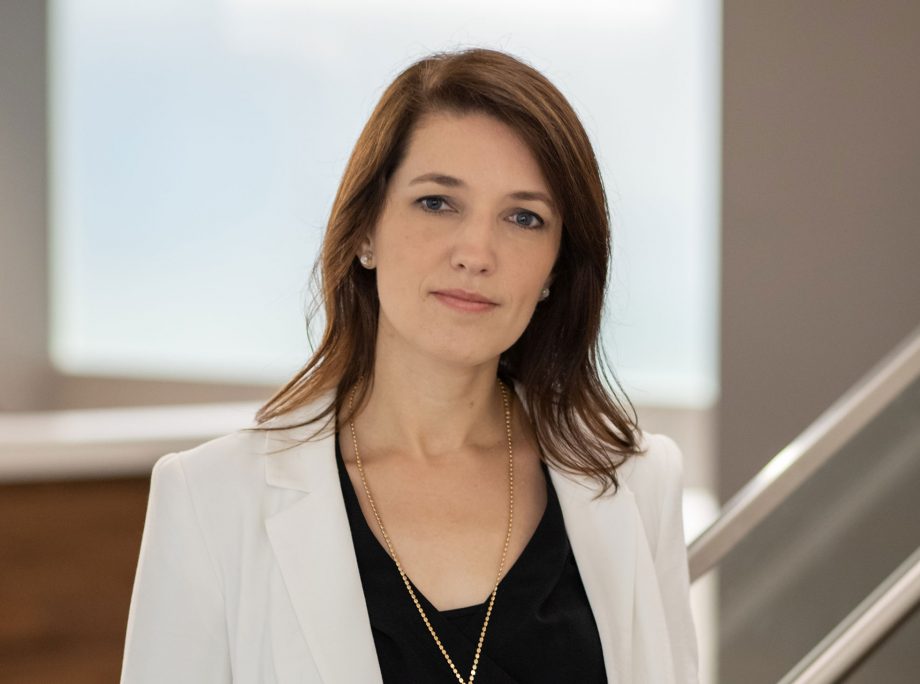
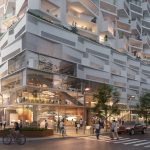

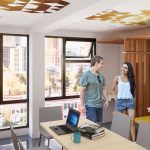
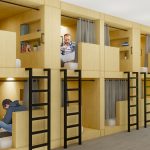
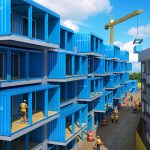
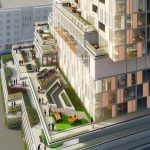


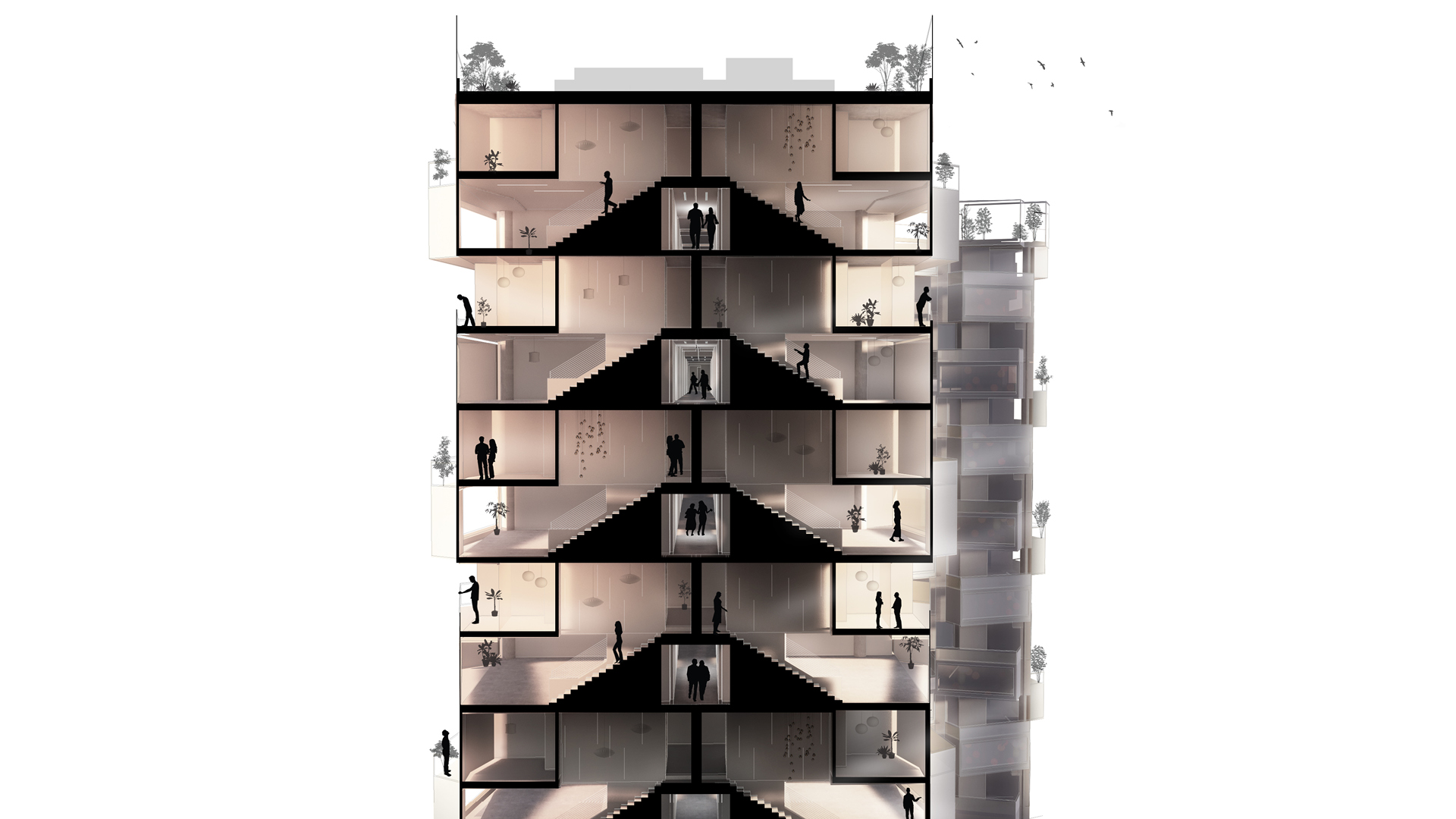
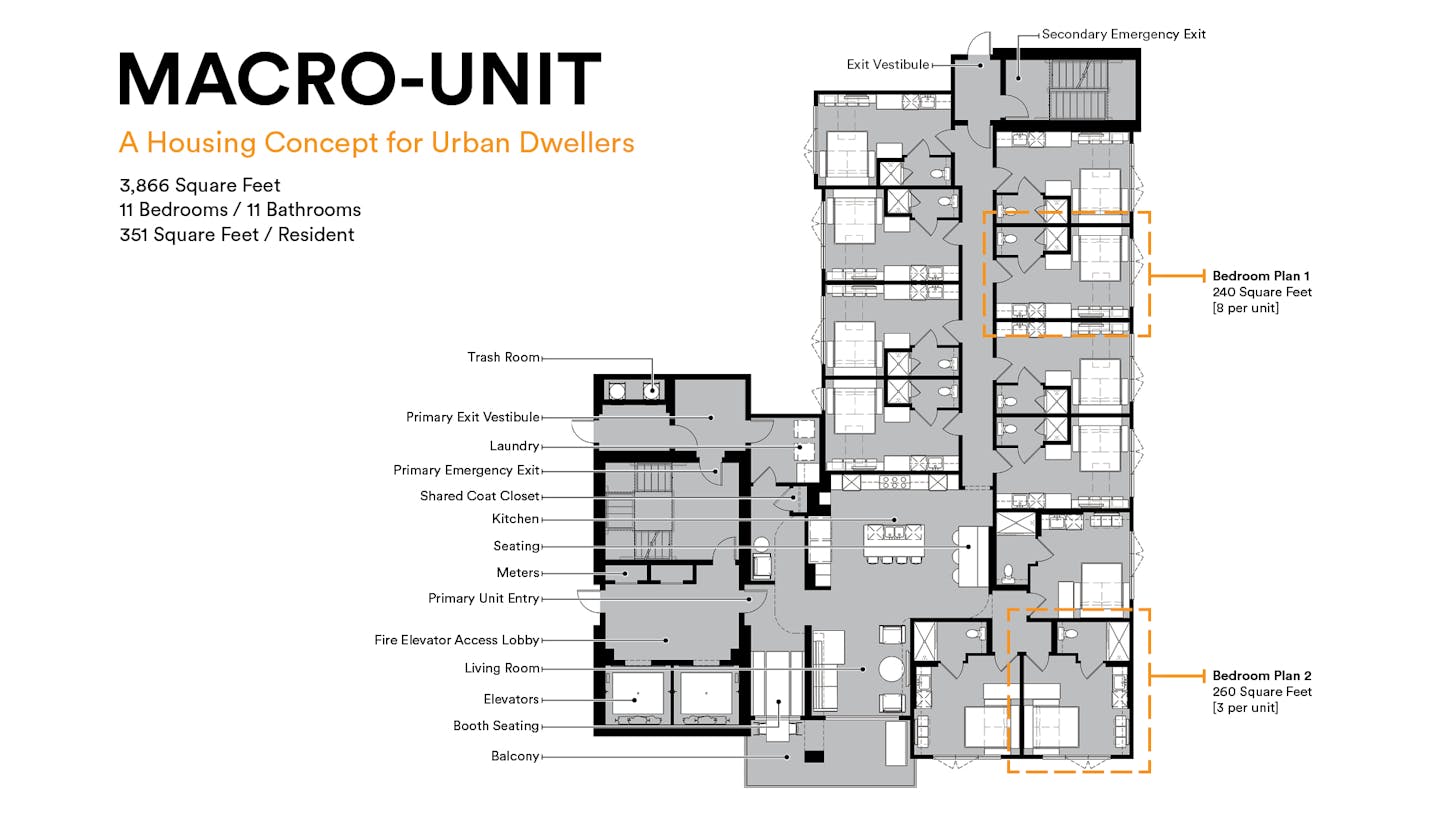 A plan view of KTGY’s Macro-Unit co-living design. Image courtesy of KTGY Architecture + Planning.
A plan view of KTGY’s Macro-Unit co-living design. Image courtesy of KTGY Architecture + Planning.



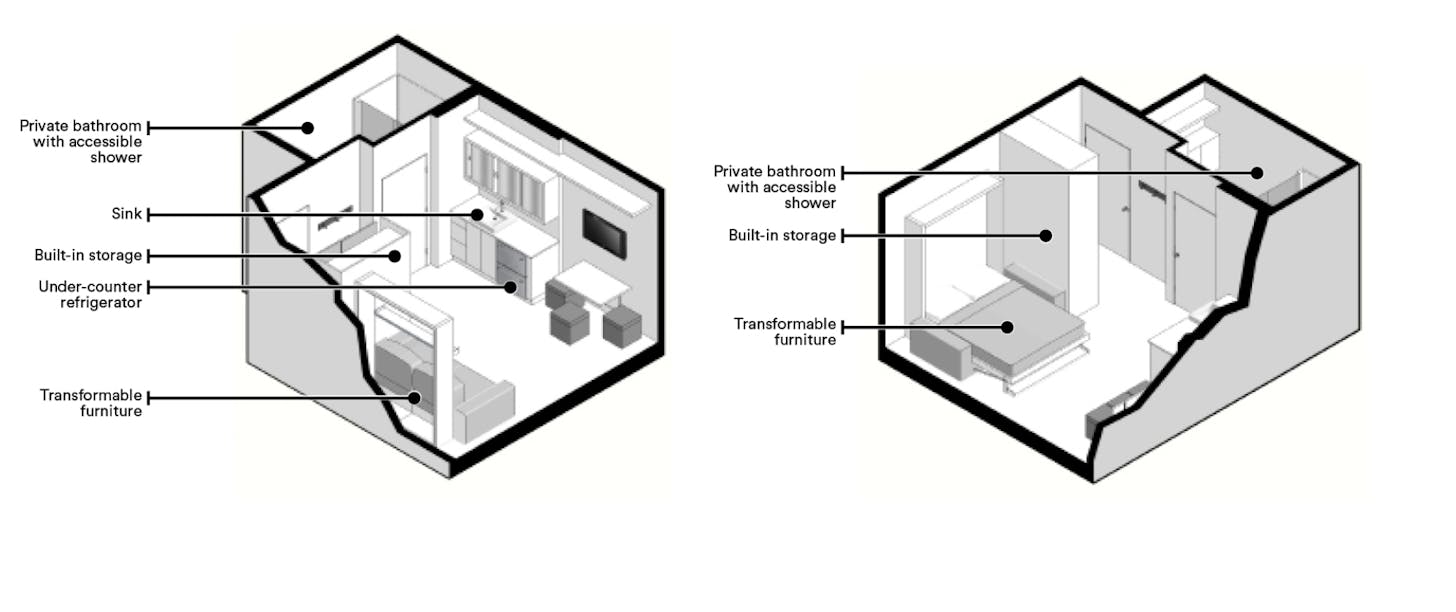 Cutaway axonometric diagram of a co-living unit with minimized kitchen arrangement that contains no stove. Image courtesy of KTGY Architecture + Planning.
Cutaway axonometric diagram of a co-living unit with minimized kitchen arrangement that contains no stove. Image courtesy of KTGY Architecture + Planning.

